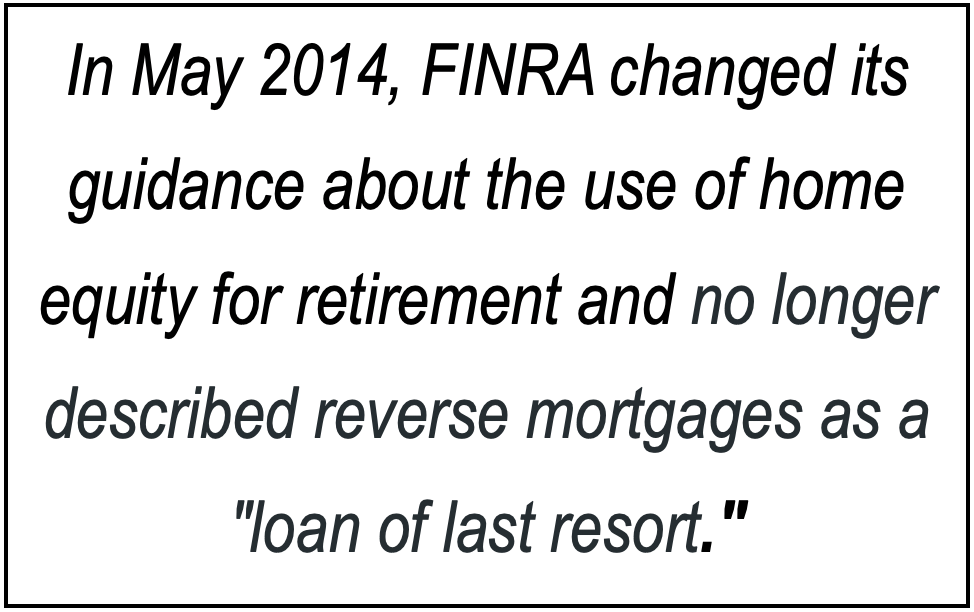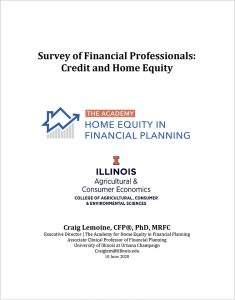A major reverse mortgage lender, Reverse Mortgage Funding, RMF filed for protection under Chapter 11 of the U.S. Bankruptcy Code in the District of Delaware on November 30,2022.
RMF maintains a large portfolio of FHA-insured reverse mortgages, named the Home Equity Conversion Mortgage (HECM). Its loan servicer, Reverse Mortgage Serving Department is responsible for distributing monthly payments and responding to requests for draws on the HECM Line of Credit.
The RMF servicer contacted its book of business with the following notice:
Accordingly, the Company is legally required to obtain a court order in order to process loan payments, and expects to do so on Monday, December 5, 2022 if not the Friday before. Once the court order is granted, RMF will immediately remit those funds to customers so their requests can be received Friday, December 2, or at the latest, Tuesday, December 6.
Please know with confidence that if your loan is in good standing, you will receive payment. Your loans are FHA insured, and your draw request is 100% insured by the FHA.
If You Have Concerns
The mailing address for the RMF servicer is
P.O. Box 40087
Lansing MI 48901
Your monthly servicing statement will indicate a phone number to call, and your loan number.
Loan and Sale of RMF Servicing
On Dec. 5, RMF secured a $13 million loan to meet these obligations. Reportedly it is in negotiation with another lender to sell the servicing portfolio and resume obligations to make payments and draws.
Conclusion
The mortgage industry is sensitive to interest rate fluctuation and other macro-economic factors. The FHA-insured reverse mortgage is designed to protect borrowers against a lender’s inability to make payments or draws. Although there appears to be a delay in meeting this obligation on the part of the RMF servicer, ultimately these loans are backed by the full faith and credit of the United States government.
Background
The 100th United States Congress passed the 1987 Housing and Community Development Act. Part of its mandate was to create a reverse mortgage to “enable elderly homeowners to convert equity in their home to monthly streams of income and/or lines of credit.” 1
Since its inception in 1988, the Home Equity Conversion Mortgage (HECM) reverse mortgage is insured by the Federal Housing Authority (FHA). The reverse mortgage differs from the traditional mortgage “which is repaid in periodic payments, (while) a reverse mortgage is repaid in one payment, after the death of the borrower, or when the borrower no longer occupies the property as a principal residence.”1 Most importantly, the reverse mortgage is a non-recourse loan. “This means that the HECM borrower (or his or her estate) will never owe more than the loan balance or the value of the property, whichever is less; and no assets other than the home must be used to repay the debt.”1
Like any insurance program, FHA insurance is funded by premiums. Reverse mortgage homeowners incur equity cost for both an upfront FHA premium (MIP) and an ongoing monthly assessment.
Product Evolution
In the last three decades, the non-recourse benefit has been augmented with additional consumer safeguards. Protections for younger spouses, limitations on the amount and pace in drawing equity, and underwriting the homeowner’s ability to meet the tax and insurance obligations have strengthened the program. The last of these is critical to the stability of the FHA insurance fund.
Once in the red, in part due to the frothy mortgage conditions along with inadequate underwriting in the Great Recession, “the financial health of the Home Equity Conversion Mortgage (insurance) portfolio dramatically improved in fiscal year 2022, ending September 30 with stand-alone capital ratio of 22.75 percent, compared to 6.08 percent the previous year, the Department of Housing and Urban Development announced this week in its 2022 Annual Report to Congress. Put another way, the capital levels for the HECM portfolio improved by $11.3 billion over the past year from a positive $3.8 billion in FY2021 to a positive $15.1 billion in FY2022.”2
Because the house itself stands as sole collateral for repayment, rising home values positively affect the insurance fund stability. If the home value at the end of the reverse mortgage is equal or greater than the loan balance, there is no claim against the insurance fund. (Note that any remaining equity remains in the control of the borrower or his estate.)
Because the homeowner must contribute to the MIP insurance fund, the lender’s recovery from the borrower is limited to the value of the home. There will be no deficiency judgment taken against the borrower or the estate because there is no personal liability for payment of the loan balance.
Current Environment
With rising home values and low interest rates, many existing reverse mortgage holders had a strong incentive to go to the well again with a HECM to HECM refinance. Some lenders built a large percentage of their business on already existing customers who chose to get more money out of their increasingly valuable asset. This maneuver caused existing loans to pay off earlier than expected, causing unease among the investors who hold the securitized mortgage bonds:
While refinances have provided a boom in overall HECM volume investors are less than enthused. Not surprising considering payoffs of HMBS (HECM Mortgage Backed Securities) exceeded $1 billion for 10 months in a row. New View Advisors noted, “December 2021 came close in both dollar amount and speed: $1.28 billion, representing a 24% annual payoff rate”. Faster prepayment speeds of existing securitized HECMs, they noted, means investors will see smaller yields.3
The cycle of boom or bust in the mortgage business persists. In 2022, rising interest rates are affecting all mortgage lenders. Mortgage lenders across the country are consolidating, closing, and/or laying off staff. 4
There is a particular risk of rising interest rates for the homeowner seeking a reverse mortgage. As interest rates increase, his access to equity declines. The result can be that many homeowners are shut out of the reverse mortgage market because their existing liens exceed the amount of benefit available. The number of new reverse mortgage loans originated has dropped.5
References
- 1987 Housing and Community Development Act
https://www.hud.gov/sites/documents/42351C1HSGH.PDF - Health of HECM Program Improves in FY2022
https://www.nrmlaonline.org/2022/11/18/health-of-hecm-program-improves-in-fy2022 - Is the HECM Refi Boom Ending?
https://hecmworld.com/reverse-mortgage-news/hecm-refinance-boom-ending-rates/ - A Long List of Mortgage Layoffs, Mergers, and Closures
https://www.thetruthaboutmortgage.com/a-list-of-recent-mortgage-closures-mergers-and-layoffs/ - Reverse mortgage volume, HMBS issuance fell further in November
https://reversemortgagedaily.com/articles/reverse-mortgage-volume-hmbs-issuance-fell-further-in-november/








